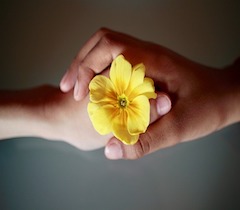Through admiration and praise for other people, respect can come through a form of subordination. In such cases, there is a power gap in communication between people. This is the respect people have for authority, which is the norm in democratic societies. In contrast, respect through a power gap can also be based on fear, which is more common in totalitarian societies. Similar lines of demarcation exist at different levels in society, targeting people who are defined as people in power. Examples include national and local politicians, religious leaders, military, police, and teachers.
Some ways to show respect are gestures, such as greeting, saluting, bowing, kneeling, stooping, refusing, nodding, standing up. It can include using polite forms of address and phrases, avoiding forms of expression that could be perceived as offensive or disrespectful, or simply listening politely. Politeness as a sign of respect can include simple words and phrases such as “thank you.”
Other ways to show respect can include refraining from doing something, such as remaining silent or avoiding inappropriate remarks, approaching with questions or exaggerated gestures, grammatical forms of politeness, and a respectful word. You can also show respect through a dress code, such as dressing appropriately for a special occasion, covering parts of your body, or removing headgear or shoes in certain buildings or spaces. Respect is often also expected in special contexts, such as national and royal symbols, religious expressions and sacred buildings, and serious signs and ceremonies.
The customs and traditions of almost all human groups or religions have always included honoring the dead and ancestors. The honoring of the dead is usually shown at funerals and other memorial events.




